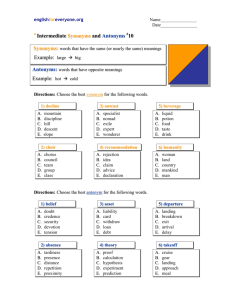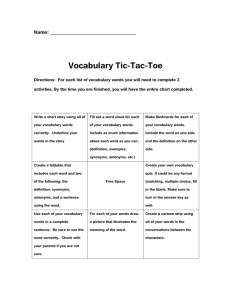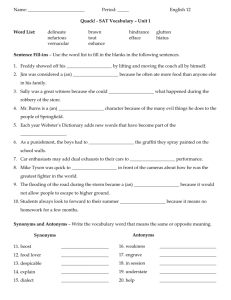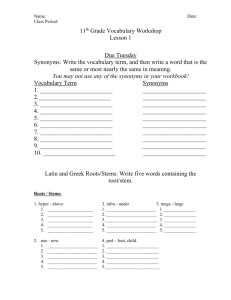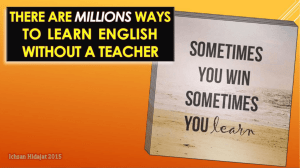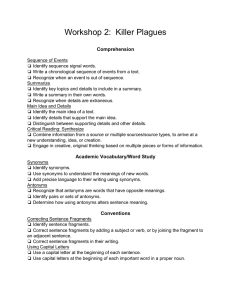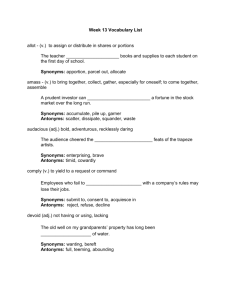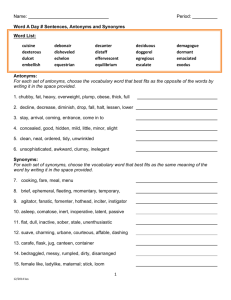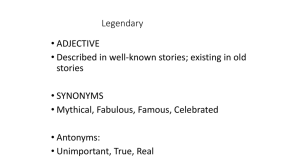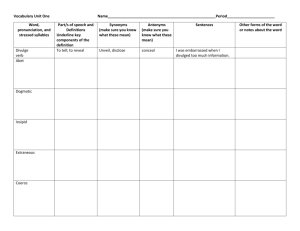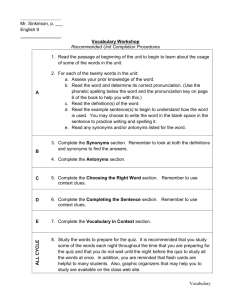35 Ways to Integrate Vocabulary Instruction
advertisement
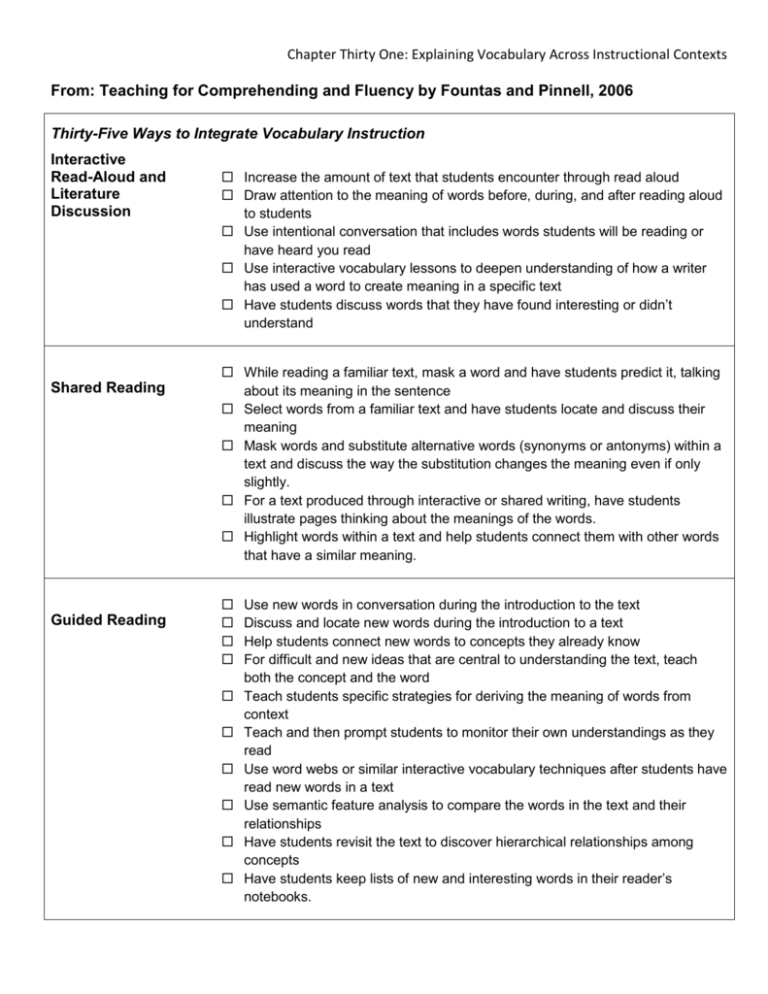
Chapter Thirty One: Explaining Vocabulary Across Instructional Contexts From: Teaching for Comprehending and Fluency by Fountas and Pinnell, 2006 Thirty-Five Ways to Integrate Vocabulary Instruction Interactive Read-Aloud and Literature Discussion Shared Reading Guided Reading Increase the amount of text that students encounter through read aloud Draw attention to the meaning of words before, during, and after reading aloud to students Use intentional conversation that includes words students will be reading or have heard you read Use interactive vocabulary lessons to deepen understanding of how a writer has used a word to create meaning in a specific text Have students discuss words that they have found interesting or didn’t understand While reading a familiar text, mask a word and have students predict it, talking about its meaning in the sentence Select words from a familiar text and have students locate and discuss their meaning Mask words and substitute alternative words (synonyms or antonyms) within a text and discuss the way the substitution changes the meaning even if only slightly. For a text produced through interactive or shared writing, have students illustrate pages thinking about the meanings of the words. Highlight words within a text and help students connect them with other words that have a similar meaning. Use new words in conversation during the introduction to the text Discuss and locate new words during the introduction to a text Help students connect new words to concepts they already know For difficult and new ideas that are central to understanding the text, teach both the concept and the word Teach students specific strategies for deriving the meaning of words from context Teach and then prompt students to monitor their own understandings as they read Use word webs or similar interactive vocabulary techniques after students have read new words in a text Use semantic feature analysis to compare the words in the text and their relationships Have students revisit the text to discover hierarchical relationships among concepts Have students keep lists of new and interesting words in their reader’s notebooks. Independent Reading Word Study Writing Workshop Ensure a large variety of texts for independent reading. Encourage students to use new words as they write about their reading in their reader’s notebooks. During sharing, have students give examples of interesting new words they have noticed. Teach students to make connections among words by meaning. Teach students to make connections in flexible ways – word part, part of speech (noun, verb, etc.) affixes, sounds, meanings. Have students play Lotto, Concentration, and other games using synonyms, antonyms, homophones, and homographs. Use poems to help students learn about synonyms, antonyms, onomatopoetic words, nouns, verbs, adjectives, adverbs, and metaphors. Teach many different kinds of words. Help students sort words by meaning. Help students understand the structure of a word and its relation to meaning. Have children make “sentence pictures” to illustrate the meaning of words. Draw attention to the writer’s selection of words in mentor texts used for minilessons Encourage students to use new and interesting words as they revise their own writing. In mini-lessons, create charts that help students make connections to words they want to use in their writing While conferring with students about their writing, help them substitute synonyms to convey the precise meaning they intend.

